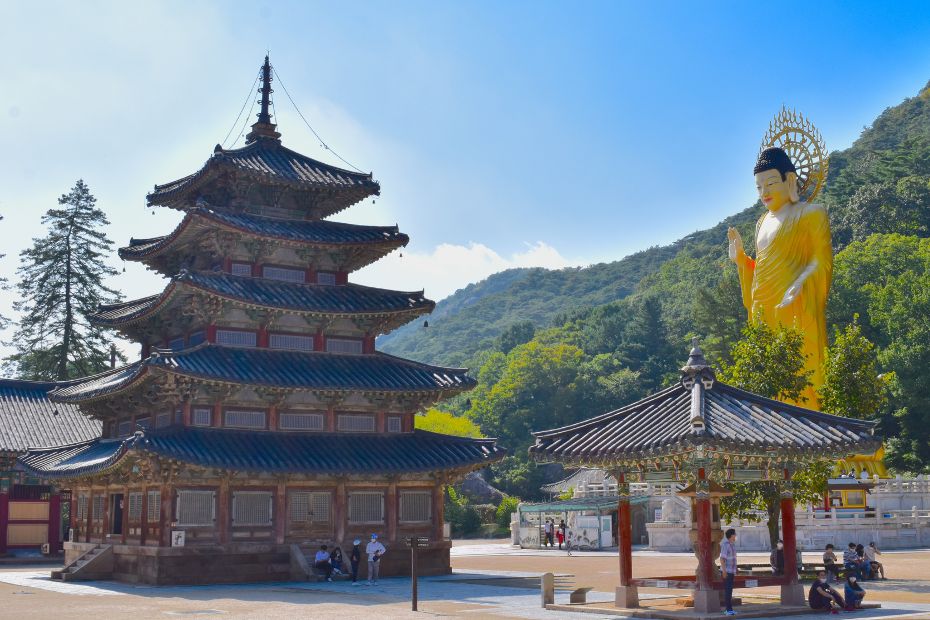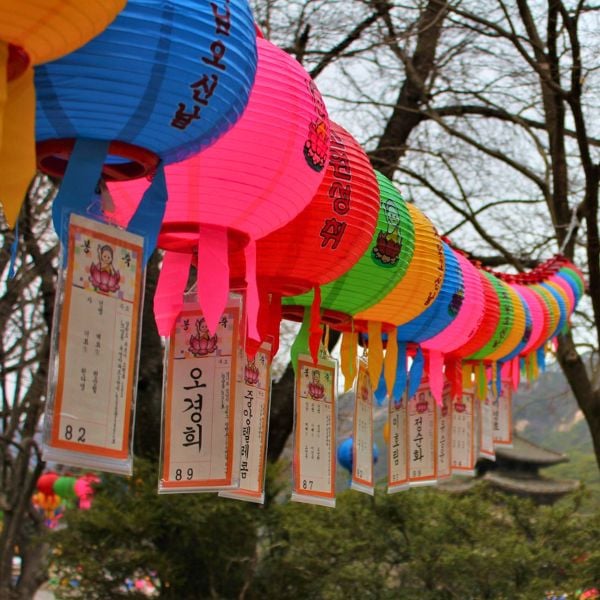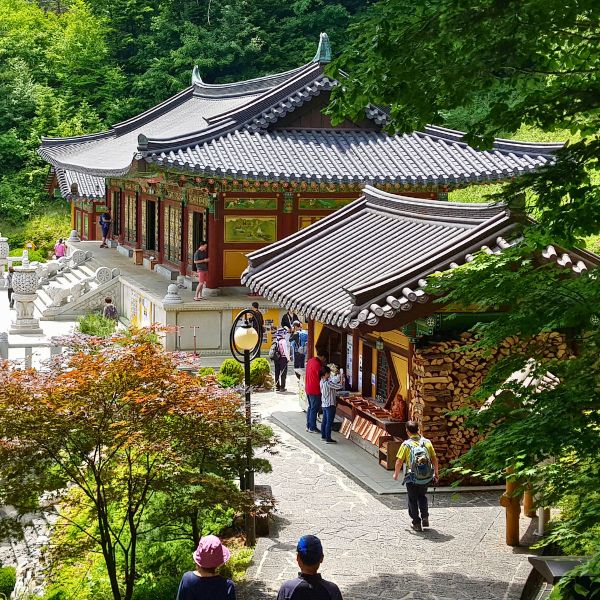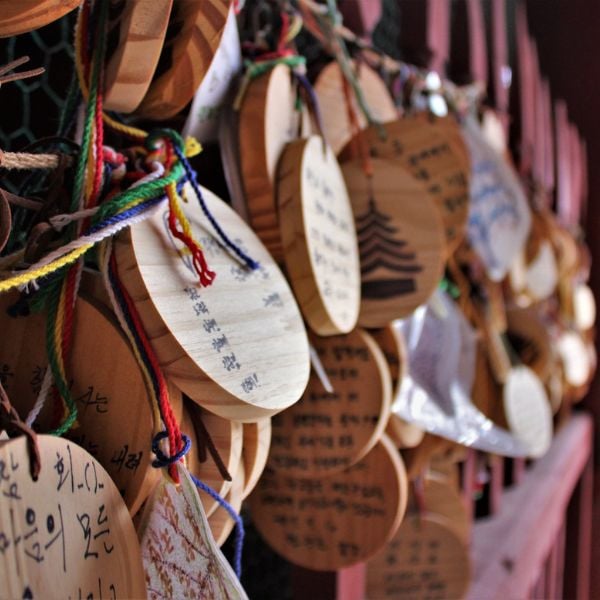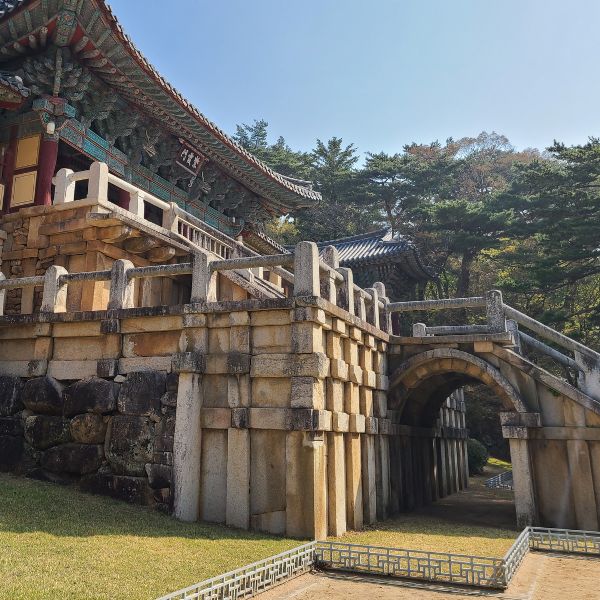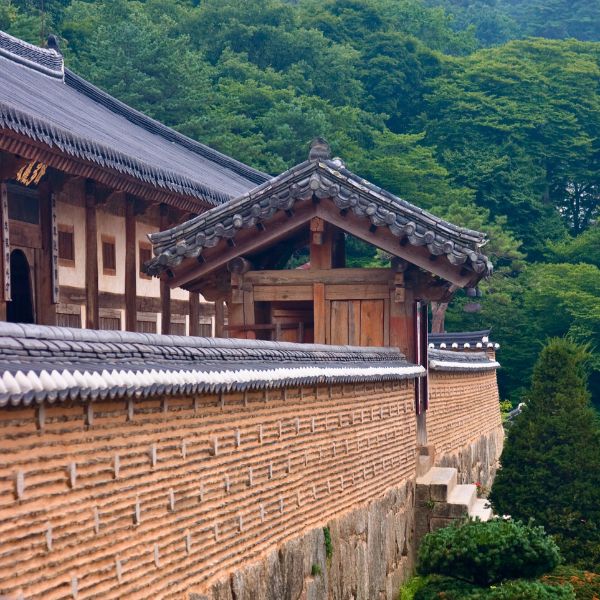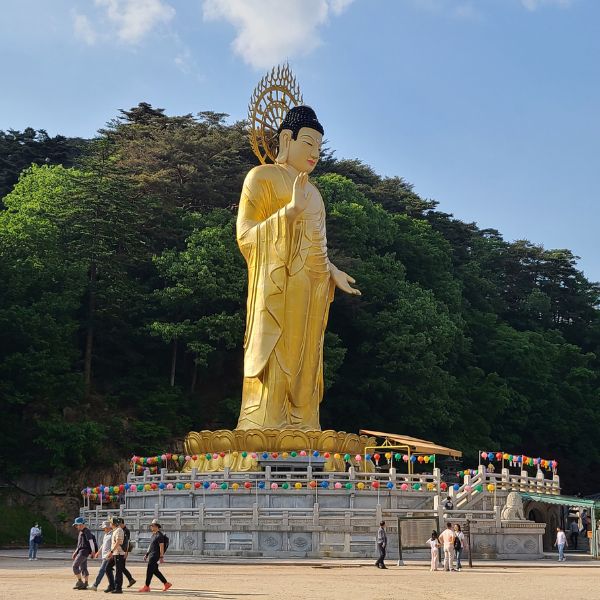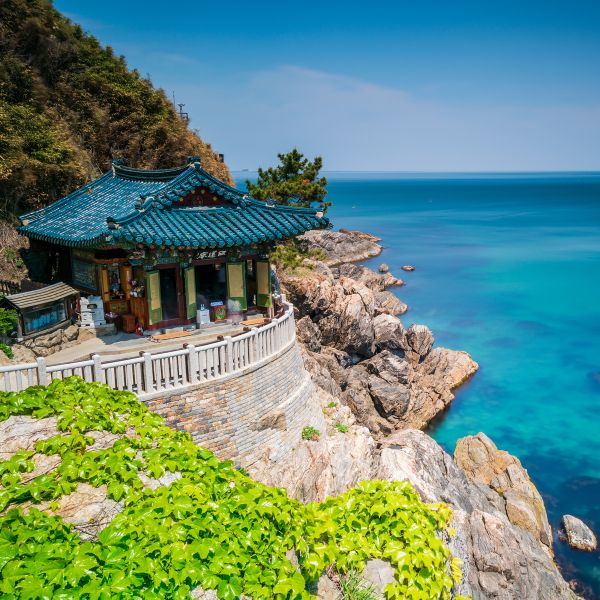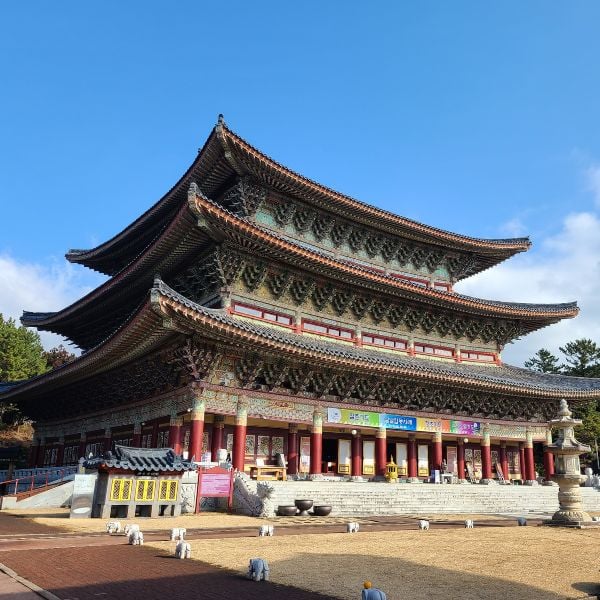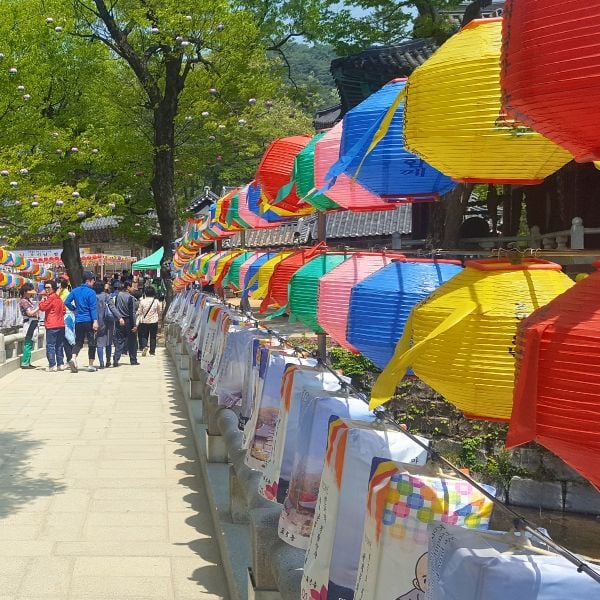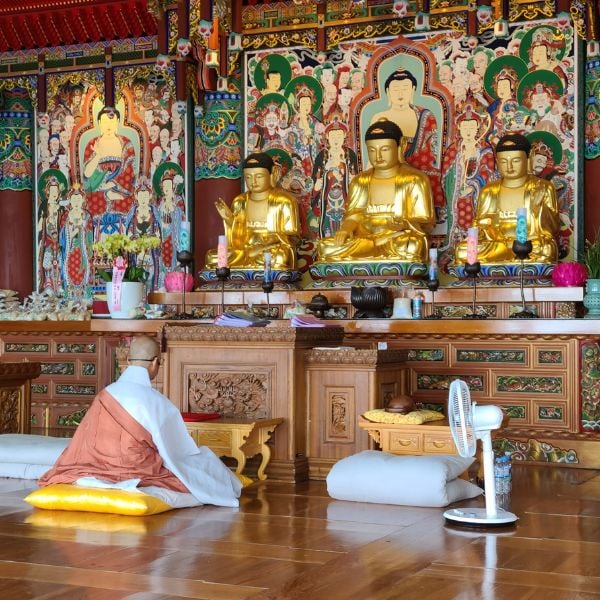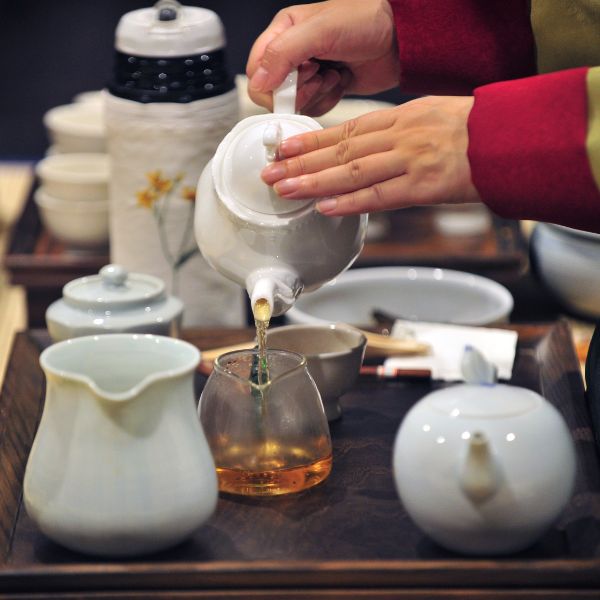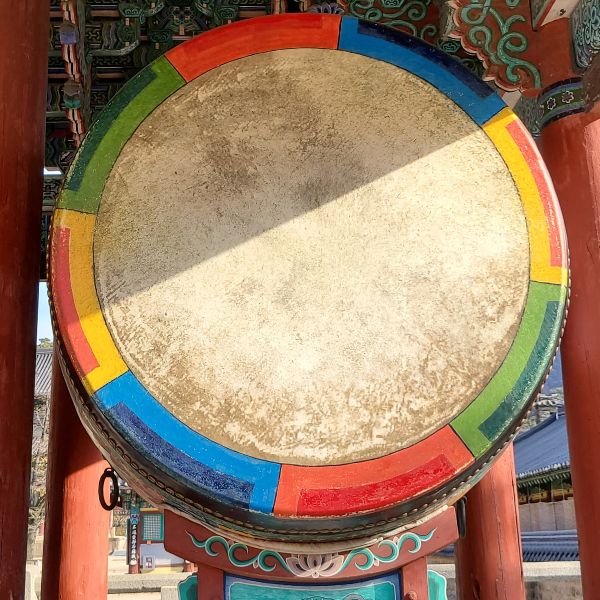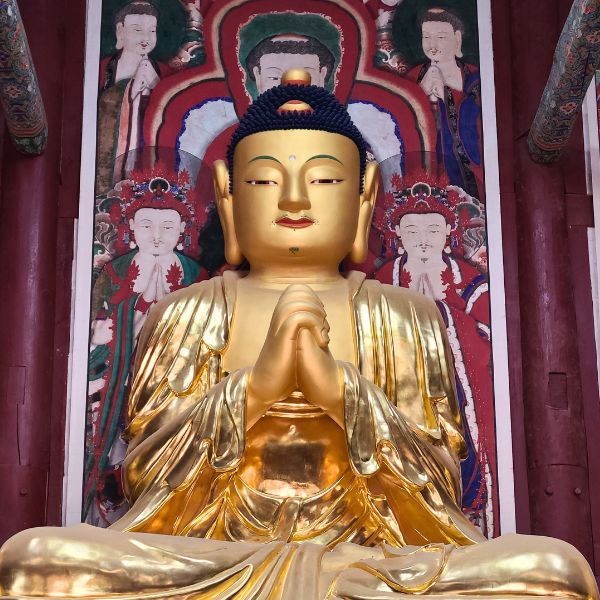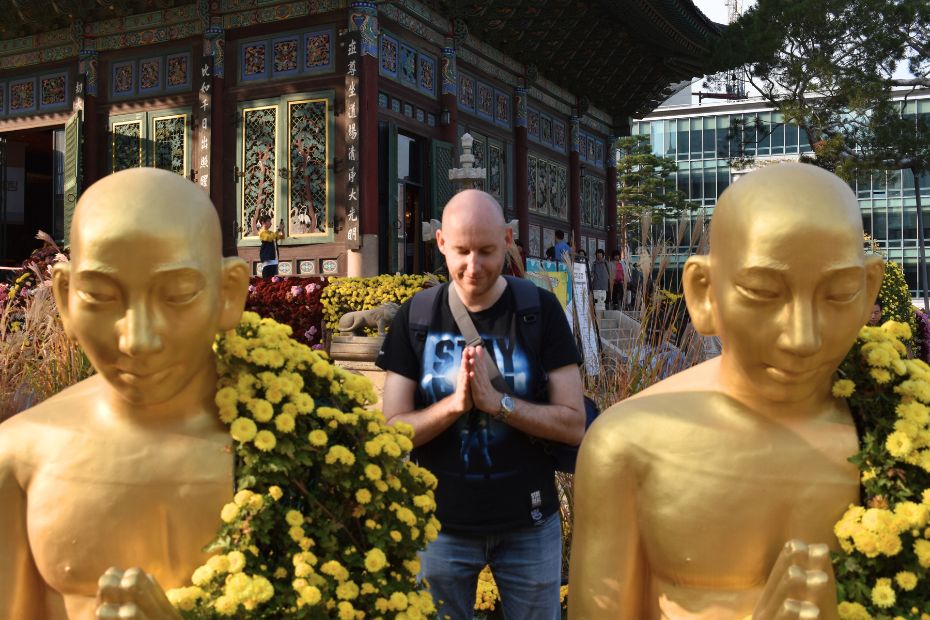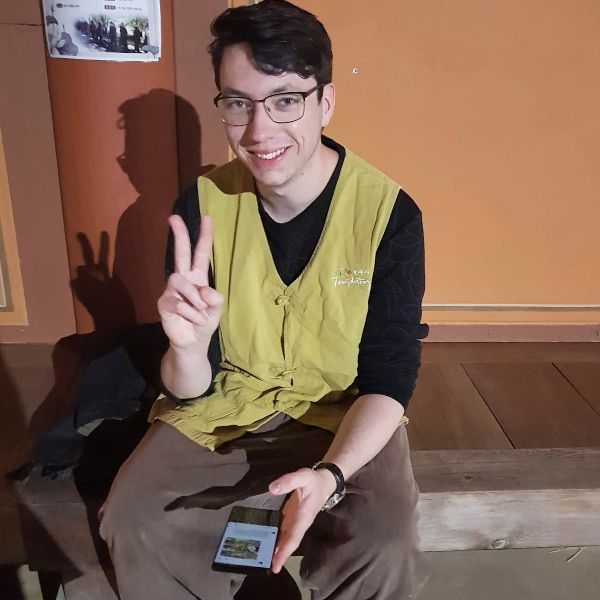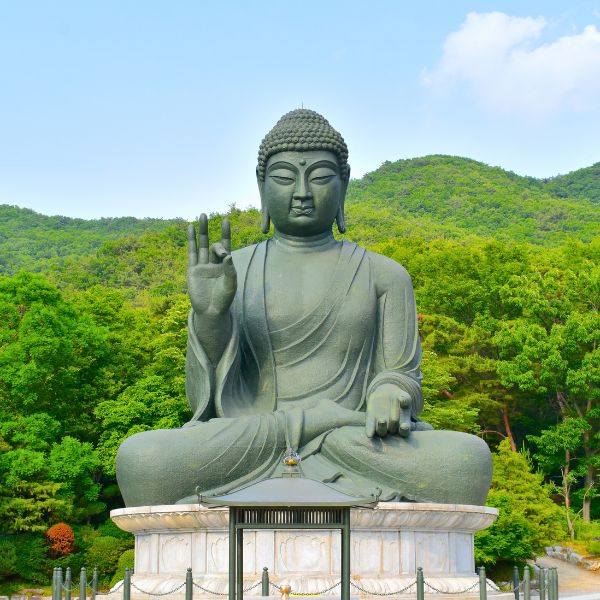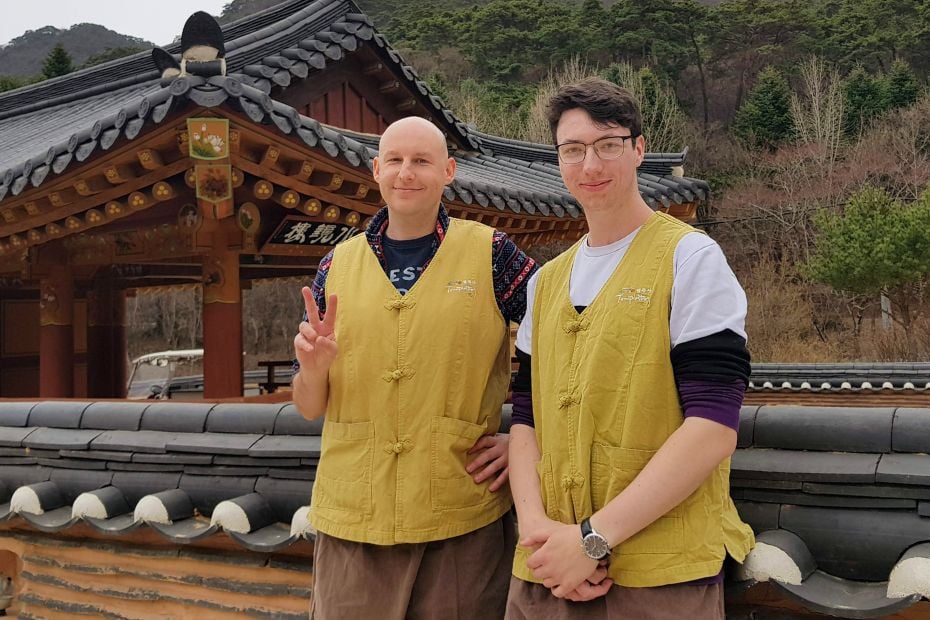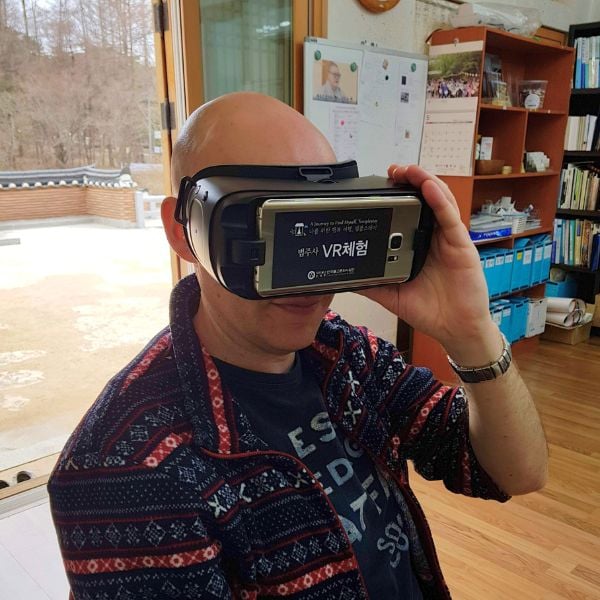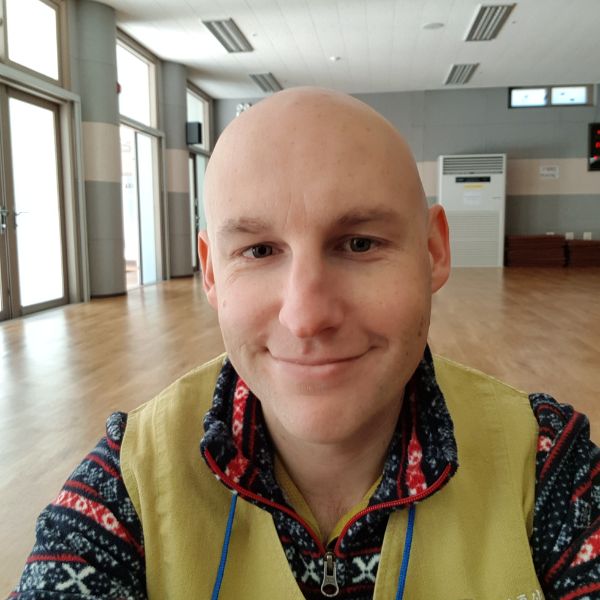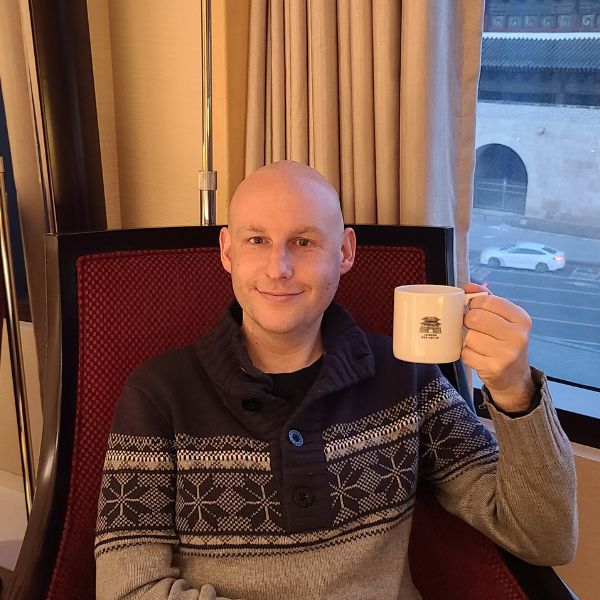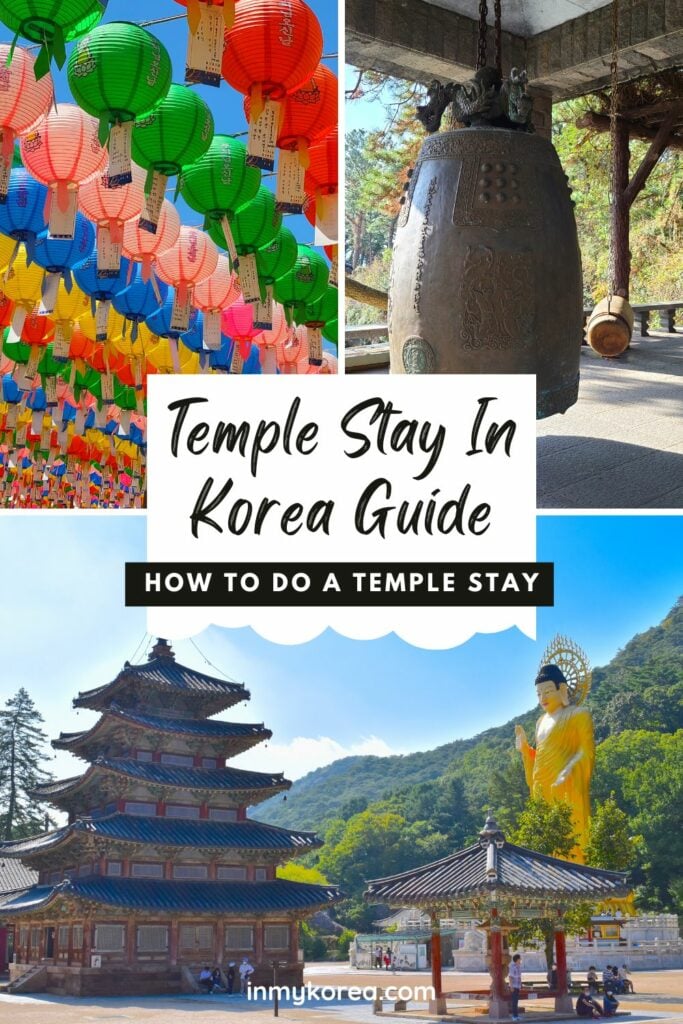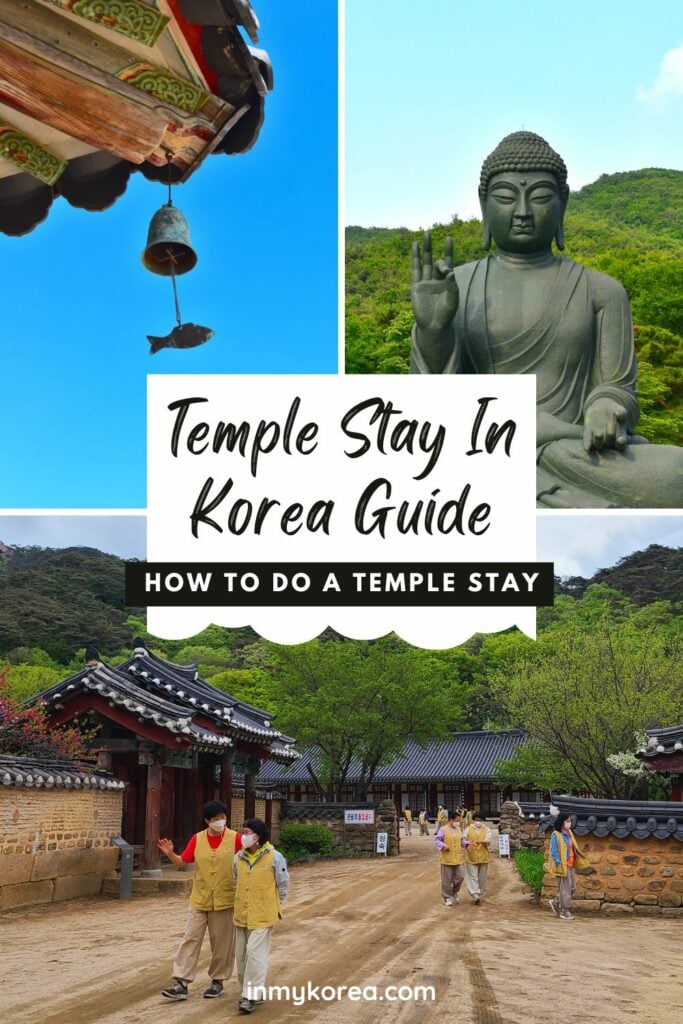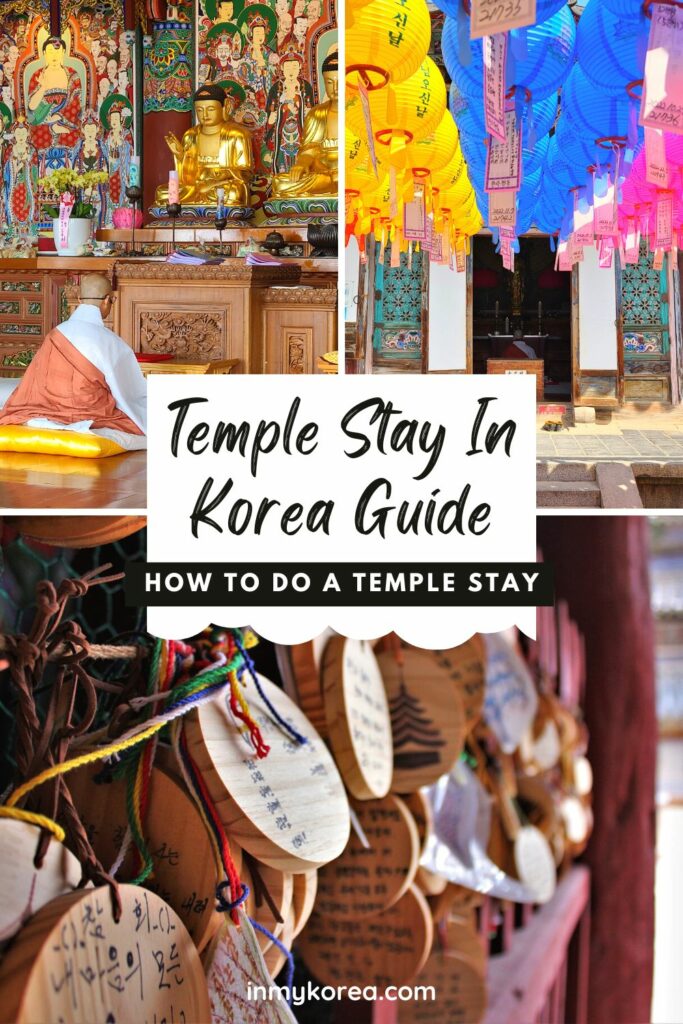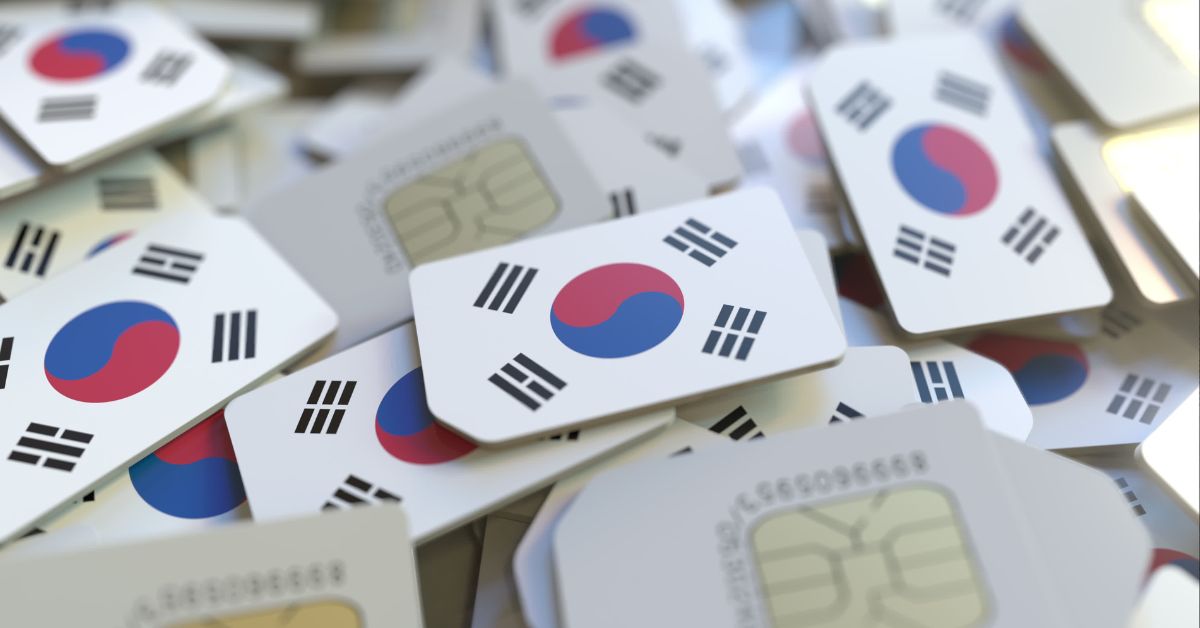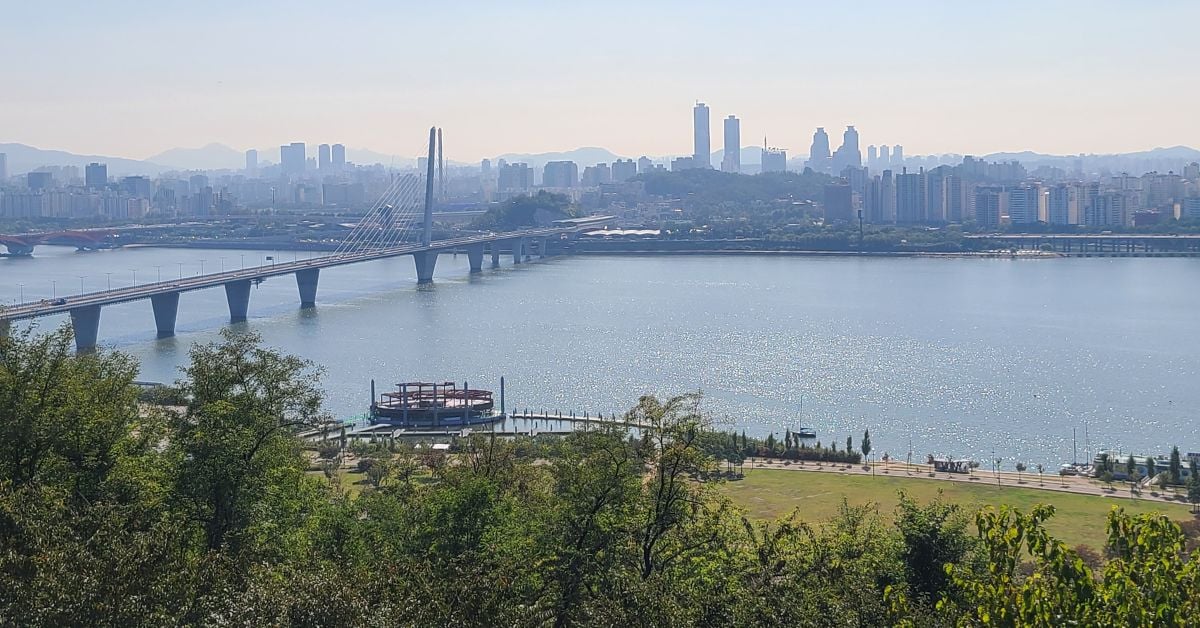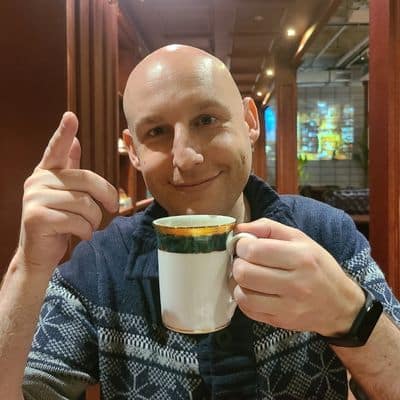A temple stay in Korea at one of the country’s ancient Buddhist temples offers visitors a unique opportunity to experience traditional Korean culture and temple life firsthand. Temple stays originated as a way for foreigners to learn about Korean Buddhism, but have grown into a fun activity for all. When you visit Korea, I highly recommend a Korean temple stay experience.
More than sightseeing, an authentic Korean temple stay lets you embrace monastic living, gaining profound yet accessible insights into the Buddhist philosophy permeating this ancient culture. Abandon modern anxieties as you awake to drummed morning prayers, meditate amid stunning nature, craft lotus lanterns by hand, and savour the monk’s contemplative cuisine.
In this article, you’ll discover the best places to do a temple stay in Seoul or in other parts of Korea, as well as my recommendations for the best temples to try a Korean templestay experience in. I’ll introduce you to the most common cultural activities that you might encounter at a temple stay and offer insights into what a temple stay is like by sharing my own experience of a temple stay.
Affiliate Disclaimer: This site contains affiliate links and I may earn commission for purchases made after clicking these links.
Why You Should Do A Temple Stay In Korea
More than mere accommodation, an authentic Korean temple stay offers visitors the rare opportunity to briefly yet meaningfully embrace the lifestyle of the Buddhist monks living in accordance with ancient traditions amidst the nation’s rapid modernisation. It’s a serene change of pace from bustling city streets, a chance to reset both body and mind through simple mindfulness practices.
On an overnight temple stay experience, you get to stay in a traditional hanok room inside the temple’s main grounds and join in ceremonies and practices not normally seen by outsiders. Awaken before dawn to attend morning prayer ceremony, join in meditation sessions surrounded by stunning natural beauty, craft lotus lanterns, and sample the monks’ flavourful vegetarian fare.
While creature comforts are few, the rewards prove plentiful – visitors often depart with refreshed perspective, having gained insight into the spiritual fulfilment framing many Korean lives. So take a pause from sightseeing to unwind the Korean Buddhist way – through cultural and personal enrichment centred on serenity, compassion and contemplation direct from a temple stay.
Some of the main reasons I think you’ll love doing a temple stay in Korea are that you can…
- see parts of the temple that normal visitors can’t.
- join in ceremonies with Buddhist monks.
- eat healthy Korean temple food.
- talk to the monks and have tea together.
- experience staying in a traditional hanok room.
- try a range of Korean cultural activities.
- explore the temple when it’s not busy.
- make new friends from around the world.
But most of all, it’s a truly unique Korean experience that you can only have in Korea, usually in a stunning setting like a national park or area of natural beauty. While a temple stay experience in Korea might not be for everyone, if you’re open to trying new things, I think you’ll really enjoy it.
Planning to visit Korea? These travel essentials will help you plan your trip, get the best deals, and save you time and money before and during your Korean adventure.
Visas & K-ETA: Some travellers to Korea need a Tourist Visa, but most can travel with a Korean Electronic Travel Authorisation (K-ETA). Currently 22 Countries don’t need either one.
How To Stay Connected: Pre-order a Korean Sim Card or a WiFi Router to collect on-arrival at Incheon Airport (desks open 24-hours). Alternatively, download a Korean eSIM for you travels.
Where To Stay: For Seoul, I recommend Myeongdong (convenient), Hongdae (cool culture) or Gangnam (shopping). For Busan, Haeundae (Beach) or Seomyeon (Downtown).
Incheon Airport To Seoul: Take the Airport Express (AREX) to Seoul Station or a Limo Bus across Seoul. Book an Incheon Airport Private Transfer and relax to or from the airport.
Korean Tour Operators: Tour companies that have a big presence in Korea include Klook, Trazy, Viator, and Get Your Guide. These sites offer discounted entry tickets for top attractions.
Seoul City Passes: Visit Seoul’s top attractions for free with a Discover Seoul Pass or Go City Seoul Pass. These passes are great for families and couples visiting Seoul – you can save lots.
How To Get Around: For public transport, grab a T-Money Card. Save money on Korea’s high speed trains with a Korea Rail Pass. To see more of Korea, there are many Rental Car Options.
Travel Money: Use money exchanges near Myeongdong and Hongdae subway stations for the best exchange rates. Order a Wise Card or WOWPASS to pay by card across Korea.
Flights To Korea: I use flight comparison sites such as Expedia and Skyscanner to find the best flights to Korea from any country. Air Asia is a good option for budget flights from Asia.
How To Learn Korean: The language course from 90 Day Korean or Korean Class 101 both have well-structured lessons and lots of useful resources to help you learn Korean.
What Is The Korean Temple Stay Program?
The temple stay program was set up by the Culture Corps of Korean Buddhism with the aim to promote Korean Buddhism to the world. This scheme lets you experience a temple stay in one of Korea’s beautiful Buddhist temples in Seoul and across the country. It’s a unique experience you won’t find anywhere else. In the words of the Korean temple stay program:
“A temple stay is a unique cultural program which lets you experience the life of Buddhist practitioners at traditional temples which preserve the 1700 year old history of Korean Buddhism.”.
– Korean Templestay Program
I’ve joined a temple stay in Korea several times now and for me the best part is the chance to learn more about Buddhist philosophy. I’ve written more about my experience doing a temple stay later in this article. Even if you have no interest in Buddhism, you shouldn’t miss the chance to check out the historic temple buildings, witness centuries of Korean culture, and consider a new perspective on life.
Different Temple Stay Experiences In Korea
There are 3 types of temple stay experiences that are available to try in Korea, ranging from a 1-day program where you can engage in various cultural activities with the monks to longer overnight stays with a range of unique and interesting programs. These overnight programs are where I think you’ll find the most value from your temple stay as you get to see the inner workings of the temple.
1-Day Temple Stays
The one-day temple stay option is best for those with a limited time in Korea. Lasting a few hours, you can experience a temple tour, learn about mediation, or join in a traditional tea ceremony. Perfect for those on a tight schedule or who want a quick introduction to Korean Buddhism.
Experience-Oriented Temple Stays
This is definitely the best option for a temple stay in Korea, this option allows you to stay overnight at the temple and join in activities not open to regular visitors. Be part of Korean Buddhist ceremonies, join morning chanting with the monks, try the 108 prostrations, eat Buddhist meals, and practice Buddhist meditation. Other activities can include lotus lantern walks and prayer bead making.
Rest-Oriented Temple Stay
For those who want the tranquility and peace that comes from a temple stay in Korea, this is for you! The temple offers you a place to escape the busy modern world and learn to recharge through meditation and Buddhist ceremonies. In addition, you can reduce your stress, recharge, and unwind.
Where To Do A Temple Stay In Seoul
From serene mountain monasteries to urban temples tucked amid the bustling city streets, Seoul offers numerous easily accessible yet wholly immersive temple stays for foreigners. Experience an afternoon learning about Korean Buddhism at a heritage temple like Jogyesa or Bongeunsa, or escape the crowds completely for an overnight mountain retreat at Hwagyesa’s peaceful forest grounds.
There are many Buddhist temples scattered across Korea’s capital, with seven locations offering temple experience services in English, as you can see in the picture below. Jogyesa and Bongeunsa are the most touristy temples in Seoul, so if you want an experience that’s away from the main crowds, try one of the other temples such as Hwagyesa or Geumsunsa.
You can search for temple stays in Seoul on the Templestay website and filtering by temples in Seoul. Here’s a list of the temple stays in Seoul and what they currently offer:
- Bongeunsa Temple – one-day temple stay experiences
- Myogaksa Temple – one-day temple stay experiences
- Hwagyesa Temple – overnight temple stay experiences
- Geumsunsa Temple – one-day & overnight temple stay experiences
- Jogyesa Temple – no current temple stay programs
- Jinkwansa Temple – no current temple stay programs
- International Seon Center – no current temple stay programs
Please note: The temple stay schedule is usually set for the upcoming year or just the next season. If there are no temple stays when you check, they might be available later on. The programs available above are based on what was listed at the most recent time I checked.
Where To Try Korean Temple Food In Seoul
More than just sustenance, Korean temple cuisine thoughtfully encapsulates the contemplative Buddhist philosophy of compassion and interdependence. Each dish spotlights organically grown soybean products, wild mountain greens, vegetables and medicinal herbs, providing flavourful plant-based nourishment for both body and soul through simplicity, balance and care.
If you want to try Korean temple food in Seoul, then you can join a temple stay in Seoul, visit the Korean Temple Food Culture Experience Centre near Anguk Station, or visit the Balwoo Gongyang temple food restaurant on the 5th floor of the Templestay Information Centre near Jogyesa Temple. The Korean Temple Food Culture Experience Centre let’s you make your own temple food dishes.
Dining at a temple is a moving experience, allowing guests to approach their plates with newfound mindfulness and insight into the Korean maxim – “We eat to live.” So be sure to sample this meaningful cuisine during an overnight temple stay, allowing Korean Buddhist philosophy to touch your lips and permeate your perspective. The serenely healthy dishes will provide food for thought.
Where To Do A Temple Stay In Korea
There are many different temples across Korea that you can stay in. They are usually located in national parks or similar beautiful surroundings. You can find temples in every major region of Korea, including on Jeju Island. Venturing beyond the capital into Korea’s serene rural pockets unveils ancient monasteries and hermitages perfect for deeply immersive temple stays.
Each of these Korean temple stays offers something special; whether it’s unique Korean culture like Tripitaka Koreana or the Korean Buddhist martial art, Sunmudo; awe-inspiring views of mountains, coastlines, and waterfalls; or simply a new outlook on life through the meditative programmes on offer. Whichever one of these temple stay experiences you choose, you’ll discover something amazing.
Here are 7 of the best places to do a temple stay in Korea outside of the capital. These temples are currently all offering temple stay experiences, but availability changes each season.
1: Lotus Lantern International Meditation Centre (Incheon): The Lotus Lantern Centre welcomes overseas visitors to experience a blend of modern relaxation and ancient Buddhist traditions in Incheon, near Seoul. The temple stays include a free-style program where you can choose what to do, as well as regular overnight temple stays with chanting ceremony, temple cuisine, and accommodation.
2: Bulguksa Temple (Gyeongju): This is arguably one of the most impressive places to do a temple stay in Korea as this historic temple has UNESCO World Heritage status. Bulguksa Temple offers overnight stays which include morning meditation as the sun rises over the grand courtyard, joining the monks in daily rituals, and a chance to explore the ornate 15th century Buddhist sanctuaries.
3: Haeinsa Temple (Gayasan National Park): Remote yet easily accessible Haeinsa Temple, nestled within Hapcheon County’s verdant mountain valleys, unveils Korea’s Tripitaka Koreana wooden block anthology alongside meditation sessions, monastic cuisine, lotus lantern making, and sunrise ceremonial drumming through their memorable one-night temple stay.
4: Golgulsa Temple (Near Gyeongju): Golgulsa Temple has a large selection of temple stay experiences and provides the unique opportunity to witness and try ‘Sunmudo‘ – a Korean Buddhist martial art. There’s also the chance to try meditation on the beach, archery, horseback riding, and many of the other interesting activities that you’d expect during a temple stay in Korea.
5: Beopjusa Temple (Songnisan National Park): Home to Korea’s tallest wooden pagoda and a mammoth bronze bell, majestic Beopjusa Temple treats overnight visitors to personally crafted experiences like lotus lantern making, chanting ceremonies, temple cuisine, and taekwondo alongside scenic mountain trekking through Songnisan National Park’s lush foliage.
6: Naksansa Temple (Near Sokcho): Naksansa Temple treats overnight visitors to personally tailored stays combined morning prayer ceremonies amid stunning East Sea sunrises, a guided trek to a cliffside hermitage overlooking the sea, meditation, and deliciously simple monastic vegetarian fare. This is a great temple to stay in if you’re planning to visit Korea’s east coast.
7: Hwaeomsa Temple (Jirisan National Park): Nestled within Jirisan National Park’s trees, ancient Hwaeomsa Temple invites visitors into the daily life of their monks through immersive overnight stays – rising with the sun for morning prayer chanting, joining meditation sessions and Buddhist lectures, crafting lotus lanterns, dining on traditional temple cuisine, and resting amid mountain-framed serenity.
These next 3 temples currently don’t have any temple stay experiences available, but I’ve included them because they’re really beautiful temples that are definitely worth visiting just to explore. They might have temple stay programs again later in the future.
Yakchunsa Temple (Jeju Island): This is a very unique temple in Korea that looks like it would be more at home in South East Asia than in Korea. The entrance to the temple is lined with palm trees and it looks out over the rugged coast and sea. There are tangerines growing in the temple grounds and many unique and interesting sights to see. One of my favourite temples I’ve visited in Korea.
Magoksa Temple (South Chungcheon Province): Enveloped within the lush peaks of Mount Taehwasan, Magoksa Temple invites visitors to immerse in temple life through their overnight stay – greeting the mountain sunrise with Buddhist chanting, meditating stream-side in the pine-scented forest, crafting paper lanterns, dining on homemade temple cuisine, and retiring to their tranquil, natural haven.
Woljeongsa Temple (Odaesan National Park): With grounds enveloped by Odaeasan’s panoramic national park, historic Woljeongsa Temple treats visitors to personally tailored temple stays. It combines morning prayer ceremonies, meditation under waterfalls, monastic vegetarian meals made with organically grown ingredients, and Korean culture classes like lotus lantern crafting.
The Temple Stay Experience: What To Expect
Now that you know where you can do a temple stay in Seoul or Korea, let’s see what will happen during your temple stay experience. There are many different activities you can take part in during a temple stay in Korea. Most temples will offer these wonderful experiences. In addition, some temples offer more, including walks, treks, traditional crafts, and even music performances.
Guided Temple Tour: Ever explored a Buddhist temple and wondered what all the interesting statues, patterns, and symbols meant? Now you can find out with an English guided tour around the temple. The temple staff will kindly explain the history, culture, and meaning behind all you see at the temple. Great for increasing your knowledge about Korean Buddhism.
108 Prostrations: A mainstay of Korean temple stays is performing the bowing ritual ‘108 prostrations’, involving fully lowering one’s body to the floor 108 times as a symbolic shedding of greed and ego. While challenging physically, finishing evokes a profound sense of humility and purification amongst temple stay participants. This may involve threading 108 prayer beads at the same time.
Yebool (Buddhist Chanting): Yebool is the opening chant to start the day and offers the chance for self-reflection and purification for the day ahead. During a temple stay in Korea you’ll be able to join the monks inside the temple, somewhere most tourists will only see from the outside. Yebool chanting starts before sunrise, so make sure you get an early night the night before.
Da-Seon (Tea Ceremony): The Korean Buddhist tea ceremony is a form of meditation in itself. Firstly, practice mental discipline and concentration through the processes involved in creating the perfect cup of tea. Secondly, harness all your senses whilst you prepare and drink the tea in quiet contemplation. During the tea ceremony you have the chance to ask a monk questions.
Balwoogongyang (Monastic Meal): Balwoogongyang is the traditional method of eating a meal at Buddhist temples. Containing a mixture of rice, vegetables, and side dishes, certainly this healthy vegan-friendly meal will help you appreciate the simplicity and honesty of food. Eat together in silence, waste nothing, and give thanks for all of the hard work involved in your humble meal.
Walking Meditation (Pohaeng): A core element of Korean Buddhist practice is ‘pohaeng’ walking meditation – slowly circumnavigating temple grounds in silent contemplation, focusing on the sensation of each step to calm the mind. Most temple stays offer this meditative activity, allowing you to mindfully traverse flower-lined courtyards and soak up the tranquil beauty in these sacred refuges.
Cham-Seon (Seon Meditation): Seon meditation focuses on clearing your mind of thoughts, allowing you to learn mindfulness and concentration. This is one of the main practices of Korean Buddhists. By practising Seon meditation you will be able to learn your true nature and discover inner peace. If you just want to focus on meditation, I recommend visiting the The International Seon Center in Seoul.
Korean Traditional Culture Experience: This includes a range of cultural experiences offered by each individual temple. For example, you might make lotus flower lanterns or wood block prints, prepare temple food, or even see musical performances. Each temple stay offers their own unique cultural experiences, which you can see on their Templestay website page.
What To Bring To A Temple Stay
As most temple stays involve basic accommodation and an early morning start, be sure to come prepared with an open mind plus:
- Temple stay voucher
- Toiletries
- Modest, comfortable clothing – nothing too short or tight-fitting
- Light jacket – early mornings / late nights can be chilly (thicker in winter)
- Socks for removing shoes at temples
- Comfortable shoes for walking
- Water bottle (although drinks will be provided)
- Small backpack for guided outdoor mediations/treks
- Camera to capture temple grandeur and natural beauty
- Journal to record your spiritual insights
- Phrasebook / translation app if needing to communicate with monks
As temple stays allow only small bags within sleeping quarters, best leave luggage locked at temples and pack light necessities in a daypack instead. With humble lodging and vegetarian monk’s fare the norm, indulge in life’s luxuries beforehand or after. This program’s rewards lie not in lavish comforts but in the rare chance to personally immerse in the temple culture still thriving in modern Korea.
Do You Need To Know Korean To Do A Temple Stay?
You shouldn’t need to speak any Korean to join a temple stay experience as the program is designed to welcome foreigners and therefore there are guides who can speak English, as well as translate anything the monks might say. During the temple stay experiences I have been on, there are often people from around the world, with a variety of different backgrounds and native languages.
How To Book A Temple Stay In Korea
There are two main ways you can book a temple stay in Korea and both are really easy to do in English. You won’t need to know any Korean to book these, don’t worry.
Book online: Firstly, you can book a temple from the Templestay website. This website is helpful and shows you where you can do various temple stay experiences across Korea. It’s all in English and provides lots of essential information. You can book a temple stay before you arrive in Korea, which is recommended to help you plan your schedule and guarantee your place.
Book in Seoul: You can also book a temple stay by visiting the Templestay Information Centre in Insadong, Seoul. This is close to Jogyesa Temple, which is an excellent Buddhist temple that’s certainly worth visiting while you’re in Seoul, even if you don’t end up doing a temple stay. The information centre staff should be able to speak English and can answer your questions about the experience.
How Much Is A Korean Temple Stay?
I checked the prices of various Korean temple stay programs in Seoul and across Korea and the prices in 2024 range from ₩30,000 – ₩50,000 for a one-day program and from ₩60,000 to ₩100,000 for an overnight stay at a temple. The cost of a temple stay is different for each temple, depending on what they offer, the length of the stay, and other factors like that.
Considering that hotel rooms in Korea can be around ₩60,000 to ₩100,000 for a night, you’re essentially getting a night in a hanok house with lots of extra free cultural experiences, as well as a healthy dinner and breakfast. It’s certainly great value for money. If you’re just visiting the temple and not doing a temple stay, it’s free to visit, but donations to the temple are of course appreciated.
Etiquette Rules For Korean Temple Stays
It’s good to be respectful and follow the rules of any place you visit. Taking part in a temple stay in Korea is no exception, and the temples will ask you to follow a few basic rules. If you’re worried about being rude in Korea, then be sure to read my guide to Korean etiquette.
Dress code: Try to dress conservatively during your temple stay. Dark colours and long sleeves are best. Try to avoid bright and over the top clothing, heavy makeup, or strong perfume. If in doubt, cover up and keep it simple. Furthermore, you should keep your feet covered in the temple. Bring socks as you’ll need to take your shoes off inside, which is normal in Korea.
What not to do: Remember, this is a sacred place for the monks and nuns, therefore, try to avoid loud noises, smoking, or drinking alcohol in the temple grounds. There are many sacred religious objects and locations in the temple grounds, certainly avoid damaging or disrespecting them. In addition, sitting or writing on any sculptures is strongly prohibited.
In the Buddha’s Hall: When entering the Buddha’s Hall (the main temple), make sure to enter using the doors on the left and right. This is because the main door is reserved for the monks and nuns. If you enter the hall, first, do a half-bow with palms together toward the Buddha and then greet the statue with three prostrations. Temple staff will teach you how to do this.
Using your phone: In my experience, it’s been perfectly fine to bring a mobile phone with you when you take part in the temple activities, but please make sure it’s turned to silent mode so it doesn’t interrupt the monks or others. Also, try to avoid taking pictures when asked not to (in the Buddha’s Hall) and go away from others to talk on the phone. Otherwise, you’re fine to take pics of your stay.
Do You Have To Be Religious?
You don’t have to be religious to take part in a Korean temple stay experience. People of any faith can participate in a temple stay and you can certainly learn a lot and broaden your mind by joining in this program. Furthermore, the Buddhist monks and staff understand people have different views on the world and, in my personal experience, welcome discussion and alternative views.
Do You Have To Follow The Schedule?
You are free to choose whether or not you want to join the various temple stay programs. If you feel uncomfortable joining in any part, or you don’t think you can wake up before the sun rises, you can choose to miss that activity. The monks and staff at the temple stay were accommodating in my temple stay experiences. You won’t feel uncomfortable during this wonderful experience.
However, I would recommend trying to take part in everything if you can. When are you likely to be able to experience something like a temple stay again? Take note that meals are served during certain hours and won’t be available outside of those hours.
My Korean Temple Stay Experience
I’ve done a temple stay in Korea several times and absolutely loved every one. I’ve always gone for the weekend experience as there’s something special about staying overnight in the temple and getting up in the early hours to join in the morning worshipping and chanting ceremonies.
My most recent temple stay experience was at Beopjusa Temple in the beautiful Songnisan National Park in central Korea, a place I often visit for hiking. I arrived in the early afternoon and went through a VR welcome tour of the temple. Yes, even Buddhist temples have embraced new technologies in Korea! It was fun being able to see the temple from above through drone footage.
After an introduction to the program by the English guide, I got changed into the required clothing – a very simple outfit of loose trousers and top that you can wear over your normal clothes. It was still cold at that time of year, so I was happy for extra layers. There was a welcome ceremony that explained what we could expect, the rules we had to follow, and a chance to ask some questions.
I was with about 20 other people from Korea and around the world who all joined this temple stay program. We were given a guided tour of the temple grounds and told more about the traditions and meanings behind the various paintings, statues, and buildings. It was really interesting to learn about the rich history of this temple and how Buddhism has evolved in Korea.
In the evening, we ate dinner with the monks (yummy vegan home-cooked food), took a night time walk with lanterns through the temple after dark, then got an early night. The accommodation at the temple was basic, but that’s part of life in a Korean Buddhist temple. It’s also comfortable and I had no complaints. I went to sleep straight away because there was an early start the next day.
Our schedule started at 4 a.m. with a music performance by the monks. You rarely get to see this ceremony, so it was a real treat. After that was another exclusive – the morning yebool, or chanting ceremony. I didn’t understand what was being said, but I could still join in, practice bowing, learn about the importance of the ceremony and see the dedication and spirituality in the monks.
Breakfast was served around 6 a.m. and then it was time for an early morning sunrise hike to a nearby peak (only 30 minutes away) to watch the sun rise. It was a beautiful scene, watching the sun crawl over the horizon and light up the mountain peaks and forests in the national park. Fortunately, we were allowed a short nap after this before the next main activity, which was one of the toughest!
A popular activity during a temple stay in Korea is the 108 prostrations. This is also one of the hardest! There are 108 ideals that Korean Buddhists are thankful for. In order to show their appreciation, they will bow 108 times. Participants at this temple stay experience got to do this whilst also threading 108 beads to make a prayer bead bracelet. This is really hard, but I guess it’s a good test of devotion.
It was tough, yes, but also worth it. I’d recommend giving it a try. If you’re not comfortable doing it, you can grab a mat and watch from the side instead. By this time we were all hungry and went for lunch with the monks again. More delicious vegan food and my body was feeling really good by this point with all the food, sleep, and lack of technological distractions.
The final activity of the program was also one of the best – a tea ceremony and question and answer session with one of the monks. I found this was the most interesting part of the temple stay and I learned a lot from the monk. I feel sorry in a way as I asked a lot of difficult questions, but he answered them honestly and, sometimes, with shocking answers. It turns out monks can have iPhones!
Overall, I had a fascinating, relaxing, insightful time during my temple stay experience and I would highly recommend it to others. There are different temple stay experiences across the country and I want to try visiting other temples to see what they have to offer.
Frequently Asked Questions
Here are some frequently asked questions about doing a temple stay in Korea. These answers are based on my own experience and from research conducted to write this article.
What Types Of Temple Stays Are There In Seoul?
There are several types of temple stay experience in Seoul, including one-day and overnight experiences. During an overnight temple stay, you can spend the night at the temple and take part in ceremonies that tourists would not normally be able to witness. You’ll have the chance to eat with Korean Buddhist monks during a balwoogongyang (monastic meal) and join in with yebool (morning chanting).
What Do You Do At A Temple Stay In Korea?
There are various activities at a temple stay in Korea and each temple provides it’s own program. Typical programs include a combination of a temple tour, meditation (cham-seon), tea ceremony and interview with a monk (da-seon), monastic meals with the monks (balwoogongyang), Buddhist chanting ceremonies (yebool), and various other cultural experiences.
Where Can I Book A Temple Stay In Korea?
You can book a temple stay on the Korean Templestay website or at the Templestay Information Centre in Insadong, Seoul. Booking a temple stay in Korea is easy and you can do it before you arrive with their website. You don’t need to speak Korean to book at most temples and it is sometimes possible to pay for the temple stay experience when you arrive.
Do I Have To Be Religious To Do A Temple Stay In Korea?
No. You don’t have to be a Buddhist or of any particular religion to join a temple stay experience in Korea. You will learn lots about Korean Buddhism, but previous knowledge or devotion to Buddhism isn’t required at all. You won’t be pushed to become a Buddhist, either. Whether you follow Buddhism or not, please be respectful of the religious beliefs of others and the temple itself.
Do I Need To Speak Korean To Do A Temple Stay In Korea?
No. You shouldn’t need to speak Korean to do a temple stay in Korea, The temple stay website is in English and there are usually English speaking staff at the temple to help tourists who join the program.
What Is The Best Buddhist Temple In Seoul?
There are several great Buddhist temples in Seoul. Three of the best for tourists and those interested in learning more about Korean Buddhism include Jogyesa Temple in Insadong, Bongeunsa Temple in Gangnam, and Geumsunsa Temple in Bukhansan National Park, Seoul.
Can I Take Pictures During A Temple Stay In Korea?
Yes. You can take pictures during a temple stay experience, but it’s probably best to be respectful and ask before you do. There will be certain areas where you can’t take pictures, such as inside the temple during worship hours. In my experience, there were lots of opportunities to take pictures and lots of places for unique and interesting snaps.
Can I Use My Phone During A Temple Stay Experience?
You can use your phone during certain times, but it is advised that you don’t. The purpose of a temple stay experience is to get away from your normal routine and focus on the simpler, more spiritual aspects of life. This is the perfect chance to disconnect from technology and reconnect with nature and gain some inner peace. If you want to use your phone to take pictures, it’s best to ask before you do.
Liked This? Pin It For Others
If you enjoyed reading this article, then please share this with your friends on Pinterest.
